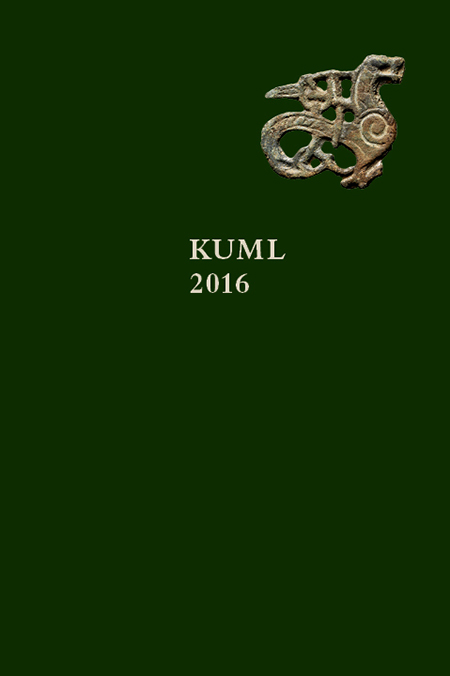Om bord på vikingetidens langskibe – En analyse af besætningsorganisation og kommunikation
DOI:
https://doi.org/10.7146/kuml.v65i65.24831Nøgleord:
vikingetid, langskibe, besætningsorganisation, kommunikationResumé
On board Viking Age longships
Analysing crew organisation and communication
By analysing the relations between man, ship and sea it is possible to gain a fundamental understanding of the sea voyages undertaken by Scandinavians during the Viking Age. This article examines crew organisation and communication on board Viking Age longships. Archaeological and written sources relating to Viking Age Scandinavian seafaring are scrutinised and combined with experience gained from sailing trials and voyages employing full-scale reconstructions of Viking Age longships: Conditions on board Viking Age longships and the seamanship of the period are investigated afresh (figs. 1-3).
It is argued that sailing and rowing experiments are important components in the analysis of archaeological finds of ships and ship-related materials. These experiments function as catalysts for processes that may lead to new interpretations of the source material (fig. 4). The practical approach represented by participating as crew on a reconstruction of an archaeologically-found ship offers possibilities for examining aspects like the flexibility of the hull, the seaworthiness and speed of the vessel under different weather conditions and logistical limitations, as well as human factors such as the physical abilities and nautical skills required of the crew. This article presents examples of how sailing trials and voyages with the Viking Ship Museum’s Skuldelev 2 reconstruction The Sea Stallion from Glendalough have led to a new understanding of the hull flexibility and strength of Viking Age longships. It is also argued that studies of crew organisation and communication on board The Sea Stallion from Glendalough provide a fundamental insight into conditions on board Viking Age longships (figs. 5-8).
A middleman is proposed as a key element in the communication on board a longship. The middleman is located close to the mast and is responsible for relaying commands and messages from the skipper, situated in the aft of the ship, towards the bow of the vessel, as well as relaying the look-out’s observations back to the skipper. In relation to this, it is interesting that sailing scenes depicted on the Bayeux Tapestry often highlight three people on board the vessels: One aft (the skipper or helmsman?), one amidships, close to the mast (the middleman?), and one close to the bow (the look-out?). These three people seem to communicate with each other, either verbally or using gestures (figs. 9-10).
In conclusion, based on the experience gained from the sailing trails and voyages employing full scale reconstructions of Viking Age longships, it is evident that the large crew and limited space on board calls for a well-defined organisation with a clear and unambiguous command structure. When combined with the need to trust and protect each other while at sea in an open boat, this creates close-knit communities of practice, as also seen among soldiers in military units. It seems likely that the practices and living conditions on board the longships contributed greatly to the creation of the Vikings’ notoriously efficient and coherent military units (fig. 11).
Morten Ravn
Vikingeskibsmuseet i Roskilde
Downloads
Publiceret
Citation/Eksport
Nummer
Sektion
Licens
Fra og med årgang 2022 er artikler udgivet i Kuml med en licens fra Creative Commons (CC BY-NC-SA 4.0).
Alle tidligere årgange af tidsskriftet er ikke udgivet med en licens fra Creative Commons.


